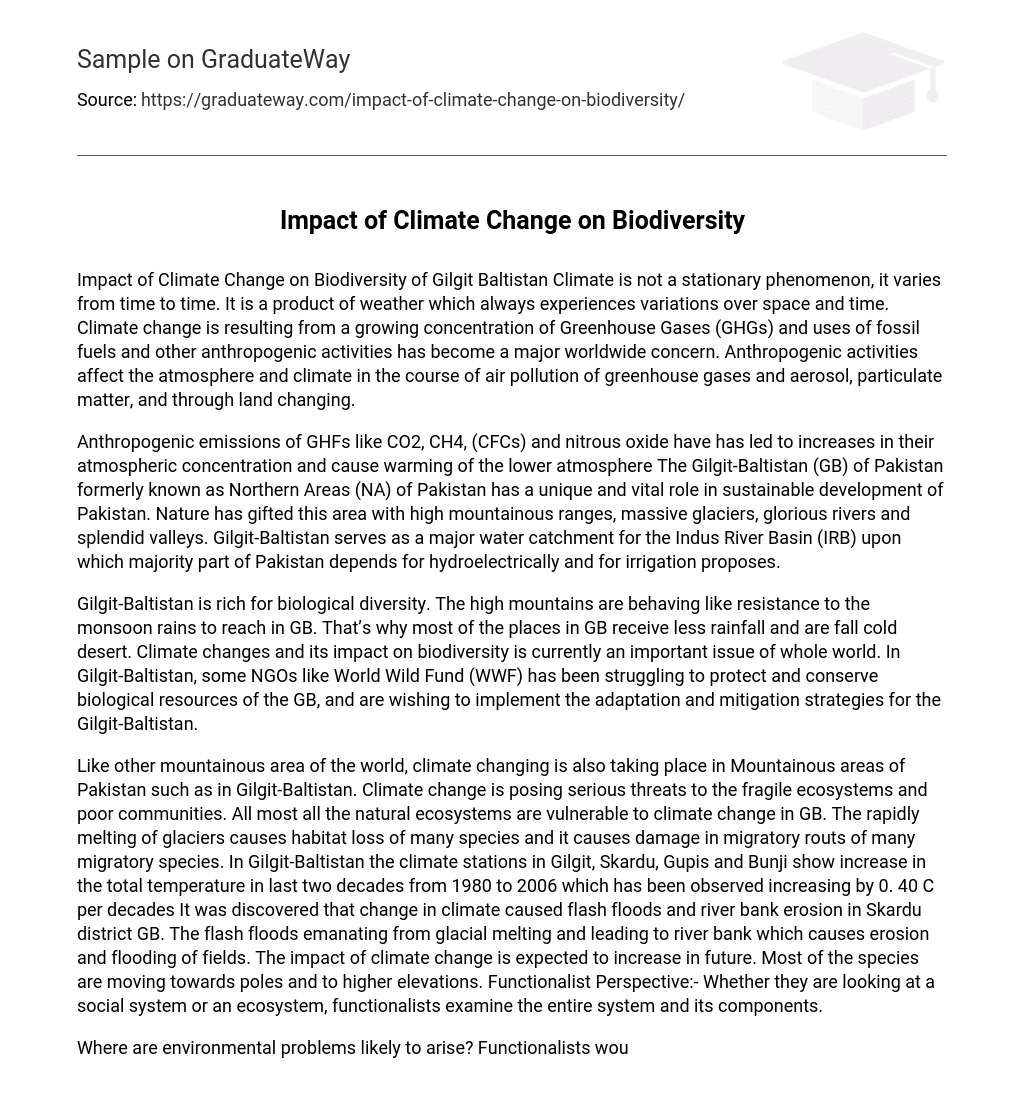The climate is an ever-changing occurrence that fluctuates in both time and space. These changes are a result of the constantly shifting weather patterns, which are always prone to alteration. The increase in concentrations of Greenhouse Gases (GHGs) and human activities like the utilization of fossil fuels have had a significant impact on the global climate. Worries regarding the repercussions on the atmosphere and worldwide climate encompass pollution from greenhouse gases, aerosols, particulate matter, and alterations to land.
Gilgit-Baltistan (GB), previously known as the Northern Areas (NA) of Pakistan, boasts extraordinary natural features including towering mountain ranges, sprawling glaciers, picturesque rivers, and breathtaking valleys. It plays a pivotal role in promoting sustainable development within Pakistan. However, human-caused emissions of greenhouse gases such as carbon dioxide (CO2), methane (CH4), chlorofluorocarbons (CFCs), and nitrous oxide have led to an increase in atmospheric concentration and subsequent warming of the lower atmosphere. This has significant consequences for GB since it serves as a crucial water source for the Indus River Basin (IRB). The IRB is relied upon by most of Pakistan for both hydroelectric power generation and irrigation purposes.
The presence of towering mountains in Gilgit-Baltistan leads to its diverse range of biological life. These mountains block monsoon rains from reaching the area, causing low levels of precipitation and classifying certain regions as cold deserts.
Climate change and its effects on biodiversity have become a global concern. In Gilgit-Baltistan, organizations like the World Wild Fund (WWF) are committed to safeguarding and conserving the region’s biological resources. Their goal is to implement customized adaptation and mitigation strategies for Gilgit-Baltistan.
Gilgit-Baltistan, Pakistan, like other mountainous regions worldwide, is encountering significant climate change risks. This encompasses vulnerable ecosystems and impoverished communities. Climate change’s effects are evident in nearly all natural ecosystems within this region. The pace of glacier melting has escalated, leading to habitat loss for numerous species and disruption of migratory paths for various migratory species.
The climate stations in Gilgit-Baltistan (Gilgit, Skardu, Gupis, and Bunji) have observed a temperature increase of 0.40C per decade over the last two decades (1980 to 2006). This rise in temperature has resulted in flash floods and erosion along the river banks specifically in the Skardu district of Gilgit-Baltistan. These flash floods are caused by melting glaciers and lead to the erosion and flooding of fields that are located near the river banks. It is predicted that climate change will continue to have a growing impact, causing species to move towards higher elevations and closer to the poles. From a functional perspective, whether analyzing a social system or an ecosystem, functionalists assess the entire system including its components.
The system has functional implications that result in environmental issues. Climate change, for example, affects the overall environment including social and ecosystem aspects. As a result, destabilizing conditions occur. It is important to recognize that human activities significantly influence Earth’s climate and ecosystem, causing disruption.
Biologists state that the environment is affected by human groups through population, individual consumption or affluence, and technological damage. In Gilgit-Baltistan, climate change hazards include habitat loss, species extinction, reduced grass in pastures, pest attacks, more frequent glacial melting, turbid water, cold weather, glacier lake outburst floods (GLOF), and destruction of water infrastructure. The community acknowledges these concerns and is actively working towards finding solutions.
Communities in Gilgit-Baltistan (GB) are exposed to vulnerability and poverty, which poses difficulties for them in dealing with the considerable influences of climate change, such as floods and droughts. It is imperative to establish enduring endeavors that concentrate on improving their readiness and ability to address these devastating occurrences. This can be accomplished through projects at the community level that strive to handle hazards associated with disasters, while also adopting strategies that encourage adaptation and mitigation. Undertaking these measures is crucial for safeguarding the lives, livelihoods, ecosystems, biodiversity, and infrastructure of GB.





